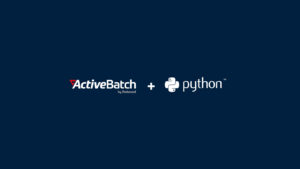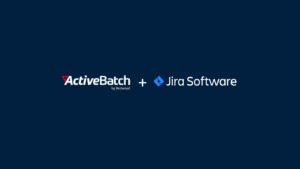DevOps Workflow Automation: 3 Tips for Automating Your Workflows
Learn how to implement DevOps automation in on-premises environments using the right tools and practices.

Implementing automation strategies that actually work for DevOps workflows can be challenging. Among many other reasons, finding the right balance between automation and human involvement can be tricky, as some tasks require human decision-making or intervention.
In this article, we will explore three essential tips to help you navigate the complexities of DevOps workflow automation successfully.
What is DevOps Workflow Automation?
DevOps workflow automation involves the following key aspects:
- Continuous Integration (CI): Automation tools integrate code changes from multiple developers into a shared repository. This allows for early detection of conflicts and issues, enabling teams to resolve them quickly and maintain code quality.
- Continuous Delivery and Deployment (CD): Automation tools enable the continuous delivery and deployment of applications. This includes automating the packaging, configuration, and deployment of applications to different environments, such as development, testing, staging, and production.
- Continuous Testing: Automation is used to execute various tests, including unit tests, integration tests, and performance tests, as part of the CI/CD process. Automated testing ensures that code changes are thoroughly tested for quality and functionality before being deployed.
- Infrastructure as Code (IaC): Automation tools, such as configuration management and infrastructure provisioning tools, allows for the automated creation and management of infrastructure resources. Infrastructure configurations are defined as code, making it easier to deploy and manage infrastructure consistently across different environments.
- Monitoring and Logging: Automation tools monitor the health, performance, and availability of applications and infrastructure. Automated monitoring and logging enable proactive detection of issues, efficient troubleshooting, and faster incident response.
DevOps Workflow Automation: 3 Tips for Streamlining Your Software Development Lifecycle
By automating various stages of the software development lifecycle, DevOps teams can streamline processes, enhance collaboration, and deliver high-quality software faster.
In this section, we’ll explore three key tips for effectively automating your DevOps workflows and maximizing the benefits.
1. Identify Automation Opportunities and Optimize DevOps Processes
To begin automating your workflows, it is essential to identify the areas of your DevOps processes that can benefit the most from automation. Start by analyzing the software development lifecycle within your organization, from code creation to deployment and monitoring.
Look for manual tasks that consume significant time and effort, such as environment provisioning, testing, and deployment. These tasks are prime candidates for automation. You can free up your development teams by automating repetitive and time-consuming processes.
Utilize open-source DevOps tools, such as Jenkins, Kubernetes, and GitHub, which offer robust automation capabilities. These tools integrate seamlessly into your toolchain and enable you to automate key tasks, such as building, testing, and deploying applications. Moreover, open-source tools provide scalability, flexibility, and extensive community support.
2. Utilize Automation Tools and API Integrations
Selecting the right automation tools is crucial for successful DevOps workflow automation. Look for tools aligning with your organization’s methodology and providing robust features to support your needs.
For instance, Microsoft Azure and AWS offer comprehensive cloud-based solutions that facilitate the automation of your development process and deployment pipelines.
Integrating different tools and systems within your workflow is essential to automation. APIs are vital in enabling seamless communication and data exchange between various components of your DevOps ecosystem. Use APIs to connect tools like version control systems, testing frameworks, and monitoring dashboards, creating an interconnected and streamlined workflow.
Another automation tool to consider is ActiveBatch. ActiveBatch is an advanced workload automation platform that provides a range of features to streamline and optimize your DevOps workflows. With ActiveBatch, you can centralize and automate processes across your entire enterprise, connecting all your business-critical systems and applications.
3. Continuously Monitor, Iterate, and Improve
Automation is an iterative process that requires constant monitoring and improvement. Implement real-time metrics and notifications to gain visibility into your automated workflows. Dashboards and monitoring tools allow your operations teams and stakeholders to track the performance and health of your production environments, enabling prompt action in case of bottlenecks or issues.
Regularly evaluate your automated workflows to identify areas for improvement. Encourage feedback from team members involved in the automation process and iterate based on their insights. This collaborative approach ensures that your automation efforts align with the evolving needs of your organization.
Additionally, use testing environments to validate your automation workflows before deploying them in production. This practice helps identify and rectify any issues or potential failures.
Deliver High-Quality Software at a Faster Pace
Automation plays a vital role in enhancing collaboration, accelerating delivery, and maintaining code quality throughout the development and deployment pipelines. However, it’s important to balance automation and human involvement, as some tasks may still require human decision-making or intervention.
With the right automation tools, such as ActiveBatch, and the integration of open-source DevOps tools like Jenkins, Kubernetes, and GitHub, you can achieve greater efficiency and scalability in your workflows. APIs enable seamless communication and data exchange between different tools and systems, ensuring a streamlined and interconnected workflow.
Frequently Asked Questions about DevOps Workflow Automation
Orchestration is a crucial aspect of DevOps automation. It involves coordinating and sequencing various workflow tasks, tools, and systems to achieve smooth and efficient execution. In the context of DevOps, orchestration tools enable the automation of complex workflows by managing dependencies, parallelism, and error handling. They ensure that different stages of the DevOps lifecycle, including development, testing, and deployment, are coordinated. Orchestration tools like ActiveBatch help streamline processes, optimize resource utilization, and provide end-to-end visibility into the automation workflows.
Learn more about the future of workload process orchestration.
DevOps automation can be implemented in on-premises environments using the right tools and practices. Organizations can leverage automation tools compatible with on-premises infrastructure, such as Linux-based systems. It allows for efficient management of the software engineering lifecycle, from source code management to continuous deployment.
Organizations can employ iterative approaches and best practices, such as iterative development and continuous integration, to successfully adapt DevOps automation to their on-premises setups. Scripting languages like Python can be utilized for custom automation scripts and integrations in on-premises environments.
Learn more about how to build and automate end-to-end workflows in half the time with ActiveBatch.







